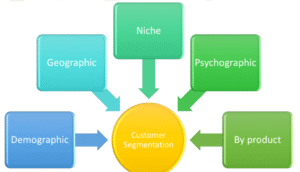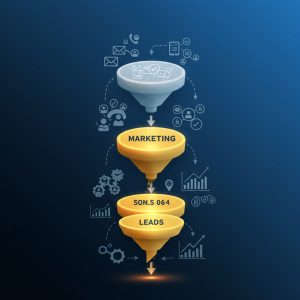How to Transition from Outbound to Inbound Marketing

Many businesses find themselves at a crossroads when their traditional outbound marketing efforts begin yielding diminishing returns. The transition from outbound to inbound marketing isn’t simply about adopting new tactics—it requires a fundamental shift in mindset and approach. At Outbound Marketo, we’ve guided numerous organizations through this evolution, and we’ve identified key strategies that ensure a smooth transition while maintaining business momentum.
Understanding the Fundamental Differences
Before diving into transition strategies, it’s crucial to understand what sets these methodologies apart. Outbound marketing pushes messages to potential customers regardless of their interest level, while inbound attracts prospects already searching for solutions. This distinction drives every aspect of the transition process.
Outbound marketing typically relies on interruption: cold calls, direct mail, trade shows, and paid advertisements. These approaches have served businesses well for decades, but today’s buyers increasingly resist these interruptions and seek information on their own terms.
Inbound marketing, by contrast, focuses on being found by potential customers through valuable content, SEO optimization, and relationship-building. According to HubSpot’s State of Inbound Report, businesses implementing inbound marketing strategies generate 54% more leads than those using traditional outbound methods, while spending 62% less per lead.
Creating a Phased Transition Plan
The most successful transitions occur in carefully managed phases rather than abrupt switches. Consider this graduated approach:
Phase 1: Foundation Building Begin developing your inbound infrastructure while maintaining existing outbound programs. This includes creating cornerstone content, optimizing your website for conversions, and establishing measurement systems. During this phase, outbound marketing continues funding your operations while you build inbound capabilities.
Phase 2: Parallel Operation As your inbound foundation takes shape, run both methodologies simultaneously while gradually shifting resources. Monitor performance metrics closely to identify which outbound channels can be scaled back first and which should remain active longer. According to research from Content Marketing Institute, this transitional period typically lasts 6-12 months for mid-sized businesses.
Phase 3: Inbound Dominance Once your inbound channels demonstrate reliable lead generation, accelerate the resource shift. Maintain only the highest-performing outbound tactics that complement your inbound strategy. Many organizations retain strategic outbound components indefinitely, particularly for enterprise sales and new market penetration.
Repurposing Outbound Assets for Inbound Success
One often-overlooked transition strategy involves transforming existing outbound assets into inbound content. Sales scripts contain valuable insights about customer pain points that can inform blog topics. Trade show presentations can become webinars or video content. Direct mail pieces often contain messaging that can be repurposed for downloadable guides.
This repurposing approach accomplishes two objectives: it preserves the institutional knowledge embedded in outbound materials while accelerating inbound content creation. Additionally, it helps outbound-focused team members see connections between their expertise and the new methodology.
Retraining Your Marketing and Sales Teams
The transition from outbound to inbound requires significant skill development. Sales teams accustomed to cold calling need training in consultative selling and social selling techniques. Marketing professionals familiar with direct mail campaigns must learn content creation and digital engagement strategies.
Invest in comprehensive training programs that build both technical skills and conceptual understanding. Teams need to grasp not just how inbound works but why it works. This understanding fosters commitment to the new approach and enables creative problem-solving during the transition.
Managing Lead Flow During the Transition
Perhaps the greatest challenge during the outbound-to-inbound shift is maintaining consistent lead flow. Inbound marketing typically produces lower initial volume but higher quality leads that increase over time. Meanwhile, reducing outbound activities can create temporary lead shortfalls.
To address this challenge, implement these strategies:
Develop lead scoring systems that prioritize high-potential prospects from both methodologies. Create a “transition funnel” that uses outbound tactics to drive awareness of your inbound content. Establish realistic expectations with leadership about potential short-term volume fluctuations and long-term quality improvements.
Measuring Success Across Methodologies
Transitioning between marketing approaches requires updating your measurement frameworks. Outbound metrics often focus on activity volume, while inbound success depends more on engagement quality and conversion rates.
Develop reporting that accommodates both systems while gradually emphasizing inbound KPIs. Track traditional metrics like lead volume and cost-per-lead alongside emerging indicators like organic traffic growth, content engagement, and sales-ready lead percentage.
Conclusion
The transition from outbound to inbound marketing represents a strategic evolution rather than a tactical change. By approaching this shift methodically—building foundations, operating parallel systems, repurposing assets, retraining teams, managing lead flow, and updating measurements—organizations can realize the benefits of inbound while minimizing transition risks.
At Outbound Marketo, we understand that this journey looks different for every organization. The most successful transitions acknowledge the continuing value of select outbound tactics while building comprehensive inbound capabilities. The result is a more sustainable, customer-centric marketing approach that generates higher quality leads at lower acquisition costs.





